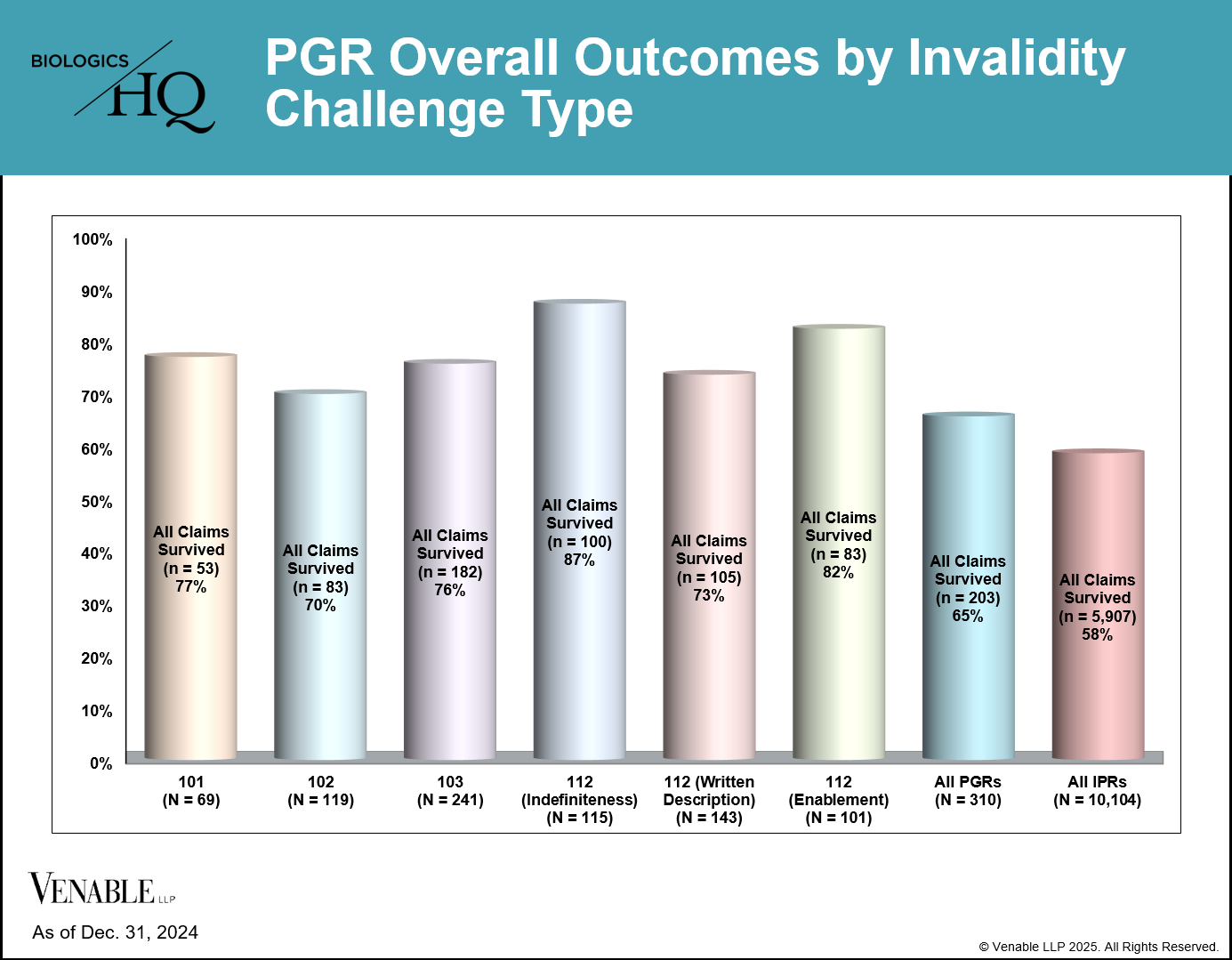
This figure shows PGR overall outcomes by invalidity challenge type. Where there were multiple challenge types in a petition each was reviewed separately. Infrequently raised challenges such as improper narrowing of dependent claims, ornamentality and double-patenting were not included in our analysis due to the limited data available for those challenges. As previously noted, because claims are often challenged under multiple grounds, they are sometimes found not unpatentable under one ground but are invalidated under another ground.
In contrast to our analysis in the “PGR FWD Outcomes by Invalidity Challenge Type” figure, which considers only FWDs, this figure considers outcomes in both Decisions Not to Institute (DNIs) and FWDs. Considering both DNIs and FWDs, 65% of PGR challenges resulted in no claims being found unpatentable compared to 58% for IPR challenges.[1] The >=70% claim survival rate is consistent across PGR invalidity challenge types. Accordingly, patent owners have a higher success rate for survival of all claims in a PGR compared to an IPR.
[1] IPR overall outcomes are based on PTO data available at: https://www.uspto.gov/patents/ptab/statistics/aia-trial-statistics-archive.
BiologicsHQ and materials published on BiologicsHQ are published for informational purposes only. Neither the information nor any opinion expressed on BiologicsHQ constitute legal advice, create an attorney-client relationship, or constitute a solicitation for business.

